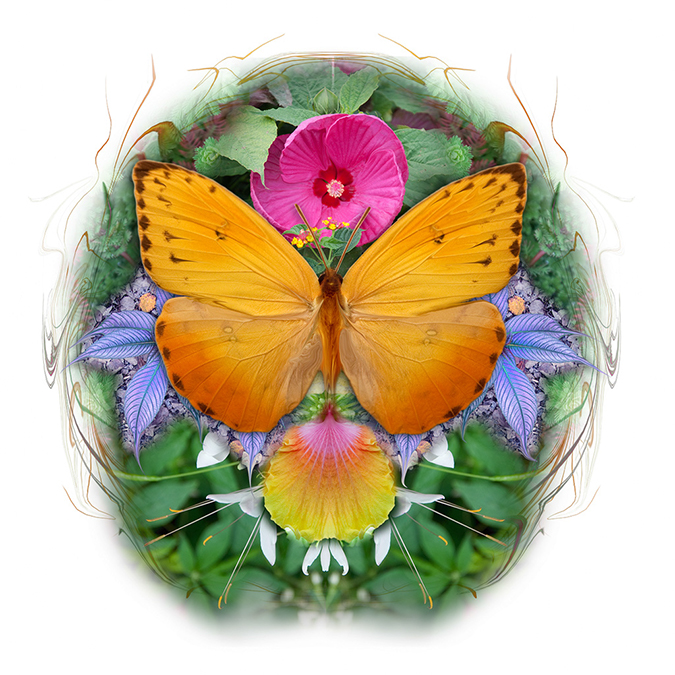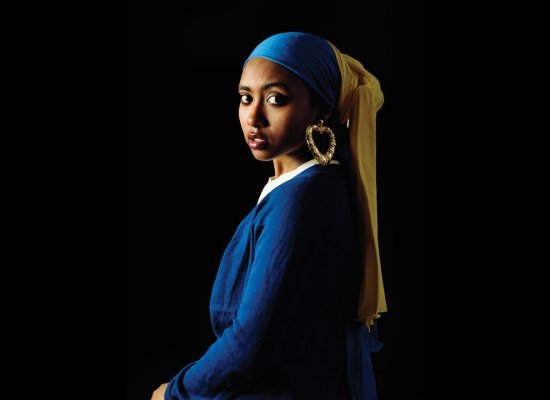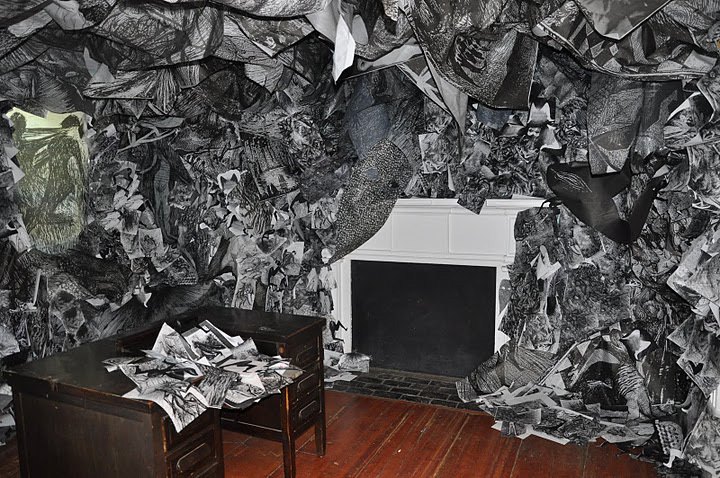Friday:
12:30–1:30 PM,
Unintended Consequences, artist talk with April Flanders, Cochenour Gallery, LRC
4:00–5:00 PM, Robert C. May photography lecture at UK, UK Student Center
7:00–9:00 PM,
Digital Vision featuring Prof. Kincer and Georgetown Art Students, SCAC (Old Jail on Water Street)
Saturday:
1:00–2:00 PM,
Digital Vision artist talk
See All Below…
April Flanders:
Unintended Consequences
Location
Cochenour Gallery in the Anna Ashcraft Ensor Learning Resource Center at Georgetown College
Dates
March 1 - March 28, 2013
Hours
The Anna Ashcraft Ensor Learning Resource Center is open daily
Monday-Thursday 7:45-1:00 AM, Friday 7:45 AM-6 PM, Saturday 8 AM-5 PM
and Sunday 1:00 PM-1:00 AM
Events Occurring on Friday, March 1st
Artist Reception 12:00-2:00 PM
Artist Talk (Nexus Event) 12:30-1:30 PM
Using
printmaking and installation, April Flanders addresses the complex
problem of invasive species and their effects on the global environment.
"Humankind has an ongoing fascination with the exotic, perhaps driven
by our need for individuality. With regard to botanical species, exotics
often thrive and ultimately take over, becoming invasive. What is
simply troublesome to the hobby gardener chokes out native forest plants
and undermines natural ecosystems. The result is an unnatural,
globalized landscape that means an inexorable death for native species.
While non-native plants can provide interest and beauty in home
gardens, they often consume their native counterparts since the natural
controls that would normally keep them in check are missing. In order to
maintain the delicate equilibrium of our environment, we must recognize
the beauty inherent in our native landscapes.
My current work addresses the issue of native versus invasive botanical
species using a variety of media including printmaking, painting,
drawing and installation. Relying on the visual language of seduction
and revulsion, I create work where viewers are confronted by their own
choices. Using pattern, repetition, and layered color I seduce the
viewer into a garden of exotics." - April Flanders
For more information, please visit our
website or like us on
Facebook.
Image: Spread by Birds, 2011 monotype, 30" x 42"

HANK WILLIS THOMAS
Exhibition: February 8 - March 10, 2013
Lecture: March 1, 4 pm
in the UK Student Center's Worsham Theater
FREE |
|
|---|
Employing
the visual language of advertising and popular culture, Hank Willis
Thomas creates images that are at once immediately accessible and
symbolically loaded. Examining the commodification of African American
athletes, he presents the familiar Nike symbol as a form of ritual
scarification or presents a basketball as a ball and chain. “My work
brings
history forward through framing our experience of race, class,
and gender as conditioned by popular culture then and now,” Thomas says.
“Ultimately, my goal is to subvert the common perception of ‘black
history’ as somehow separate from American history and to reinstate it
as indivisible from the totality of past social, political, and economic
occurrences that make up contemporary American culture.”
|
The ACC Gallery Exhibits
Arts & Cultural Center Exhibitions 2013
2013 Current Events follow:
“Digital Vision: Computers as Media”
March 1 through March 31, 2013:
“Opening Reception” Friday March 1, 7-9 p.m. Welcome the artists and the award winners of the emerging artists juried selections
“Afternoon with the Artists” Saturday March 2, 1-2 p.m. Gallery talk / Questions and answers
Digital Vision: Computers as Media:
Exhibit coordinator Bruce Frank invited professional artists Phil
Bloomfield, John Stephen Hockensmith, Darrell Kincer, Michael Levin,
Fred Reaves, and Arturo Alonzo Sandoval who also served as jurors for
the “Top 30 Emerging Artists” ranking the top 10 selections for
sponsored awards and certificates of merit. You will have two
opportunities to meet and speak with the featured artists about their
insights and techniques of visual expression. Robert “Bruce” Frank, a
well established professional artist from Scott County has participated
in exhibitions at the Scott County Arts & Cultural Center since it
opened December 2006. In this exhibit he provides outstanding examples
of “digital visions”, melding his own photography of natural subjects
through the use of computer software. He is generous with his time to
help new artists learn and grow, so we are fortunate he offered to
coordinate this outstanding exhibition of professional artists who use
computers to create – and emerging artists new to the spotlight of
gallery exhibitions.
This event of invited professional artists includes a juried
exhibition of emerging artists bringing in 71 entries from Elkhorn
Crossing School, Georgetown College, University of Kentucky, Spencerian
College, Bluegrass Community Technical College, and individuals age 25
and younger.
“If available in his day, would
Picasso have used a personal computer and graphics tablet to create his
art, or Ansel Adams used Photoshop as his digital darkroom? In my
estimation they would have embraced the digital format, if only because
artists constantly strive to perfect their craft using the all available
tools at their disposal.
From my perspective, working with
computer hardware and software allows me to explore endless variations
of color and composition, combining images instantly and with precision,
until the final result coalesces to become my vision.
The artists in this exhibit have
all used computer processes in multiple and extraordinary
ways. Computers are a constantly evolving contemporary media that will
continue to expand the creative horizons of artists for generations.”
— Bruce Frank, exhibit coordinator
The Juried exhibit of Emerging Artists:
” A key purpose of this exhibit is
to give young artists under 25, who may not have done so previously, the
opportunity to be involved in a gallery exhibit, and to open their eyes
to the possibility of becoming a professional artist, along with all
that entails. Presentation, pricing, and developing an artist’s
statement are all part of the process. In my opinion, the young artists
in this show have all risen to the occasion, and exceeded my already
high expectations by way of their enthusiastic participation and
creative thinking. “
— Bruce Frank, exhibit coordinator















































